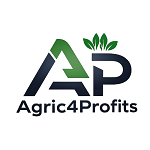Virtually all feeds contain at least some vitamins and minerals. Animals need these nutrients in much smaller amounts than they do the other nutrients, but vital to the animal therefore dietary needs must be met to achieve good animal performance and economical production.
All the required minerals are needed in an animal‘s diet and (or) water supply, but the need for supplementation vary widely among different animals.
Salt – often iodized and (or) added small amounts of other trace elements (e.g., Co, Mn, Fe, Zn, and Cu). Either as block or a loose form should be incorporated in diets.
Producers mixing their own simple rations should use supplements that contain vitamins and minerals. These supplements can easily be combined with whole grains or by-product feeds to create a balanced concentrate ration.
Complete mineral mixes are recommended when grazing low quality roughages and during gestation and early lactation. The most important minerals are calcium, phosphorus, salt (NaCl) and selenium.
Normally, when a well-balanced ration is fed, the only necessary supplement is salt and can be added by placing a salt block in the pasture or by providing salt in a pan or trough.
Read Also : Classification of Feeding Stuff and Feed Supplements: Protein Supplements
Some common mineral supplements include: salt (often trace mineralized), bone meal, oyster shell, calcium carbonate, limestone, pure forms of other specific minerals
The use of Chelates in animal feed is another advancement in animal nutrition. These are organic forms of essential trace minerals such as copper, iron, manganese and zinc.

Almost all feedstuffs contain some vitamins, but their concentrations vary widely. In plants, vitamin B concentration can be affected by harvesting, processing, and storage conditions, as well as plant species and part.
In animals, the liver and kidney are generally good sources of most of the vitamins. Yeasts and other microorganisms are excellent source, especially, B vitamins. Sometimes there are Limiting vitamins in natural diets (mostly for non-ruminants), thus the need for supplementation.
Mostly for non-ruminants – Vitamins A, D, E, riboflavin, pantothenic acid, niacin, choline, and vitamin B12, depending on the species & class. Also, biotin (in pigs & poultry) and vitamin K (with reduced microbial synthesis) in some instances?
For ruminants – Vitamin A & also $-carotene, and vitamin D & E for dairy cows? Also, thiamin and niacin in some instances.
Vitamins can be purchased individually or as a mixture. Fat-soluble vitamins need an antioxidant to retain their potency. Some water-soluble vitamins are subject to destruction by heat, moisture, light, trace elements.
Some common vitamin supplements include;ensiled yeast,liver meal,fish oil,wheat germ oil,purified forms of individual vitamins.
Non-nutritive Additives
This is a category of large group of feed ingredients added to the feed in small quantities for some reason other than their nutritive value.
Advantages of using additives
Non-nutritive additives are feed additives added to rations to;
Improve the efficiency of animal production
Improvement in intake and digestion,
Improve the health of the animal.
To improve manufacture and properties of the feeds.
To improve consumer acceptance of a product.
Feed additives are utilized extensively in commercial animal production. Feed additives have been beneficial within modern animal production, allowing producers to provide safe, wholesome, cost-effective animal products to consumers.
In more recent years, regulatory agencies and lawmaking bodies have started to restrict feeding of specific additives for various stated reasons.
Factors influencing usage of feed additives
Specific requirements of the animal,
Effects of other components of the ration,
Presence of a withdrawal period,
Effect of a withdrawal period,
Form of additive to feed, and cost-effectiveness of the feed additive.
Some commonly used feed additives
Antibiotics e.g. Terramycin, Zinc bacitracin, Flavomycin etc.
Enzymes e.g. Amylase, lipase, protease, pepsin etc.
Hormones e.g. Estrogen, progesterone, hexosterol etc.
Thyroprotein e.g. Iodinated casein.
Probiotics e.g. Microbial species. Lactobacillus.
Biostimulators e.g. Extracts of living organs like spleen, liver, ovary, chick embryo etc.
Antioxidants e.g. Vitamin E (Tocopherols), BHT (Butylated hydroxy toluene).
Mold inhibitors e.g. Propionic acid, acetic acid.
Pellet binders e.g Gur.
Coccidiostats e.g. Amprolsol powder, Furasol powder.
In summary, this category of feed ingredients (Mineral and Vitamin Supplements, Nonnutritive Additives) are added to the feed in small quantities nevertheless are very important because their lack can affect production.
In this article, we have learn about various minerals and vitamin supplements that are included in feed. We have also seen other additives included for non-nutritional reasons.
Read Also : Ways To Generate Income From Grey Water
